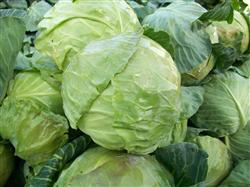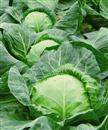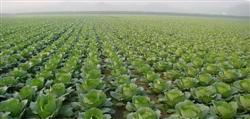How to manage kale?

How to manage kale? Please give guidance on the management techniques of planting heading cabbage can refer to the following methods: first, irrigated cabbage is a vegetable that needs a lot of water and must be irrigated many times in cultivation. According to the different water requirements in the growth period, it can be divided into seedling stage, rosette stage and heading stage. The main results are as follows: 1. Irrigation at seedling stage: generally, heavy irrigation is needed when sowing. After emergence, except that those who raise winter seedlings should be irrigated with frozen water before freezing, and when seedlings are divided, they have to dig seedling water until they are planted and dug. This is the valuable experience of vegetable farmers in our country to control the growth of seedlings by irrigation. 2. Irrigation at rosette stage: when planting seedlings, gently irrigate seedlings for 1 or 2 times, then control irrigation and squat seedlings. The time of control should not be too long and overweight for early-maturing varieties, generally 10-15 days, and longer for medium and late varieties, about 1 month or more. In terms of cultivation season, the growth rate of spring and autumn cabbage should be short-controlled, while the growth rate of winter cabbage can be controlled long-term. In order to control irrigation at the rosette stage, we should not only master a certain amount of soil moisture to make the rosette leaves have sufficient assimilation noodles, but also control that the water content should not be too much, forcing the internodes of the inner shortening stems to be short, so that the balls can be tight and solid. Do not squat seedlings too much, lest the leaves are short, the ball is not big, affecting the yield. When you begin to bear balls at the end of the rosette, you should re-irrigate. 3. Irrigation in the heading period: after the ball is opened, such as re-irrigation, the ball leaves grow fast and need a lot of water, which is indispensable according to the weather. Generally speaking, every certain number of days, the ground should be re-irrigated when it is dry, and it should be re-irrigated until the leaf ball is compact and begins to harvest. Second, after ploughing, cultivating soil and weeding cabbage seedlings, gently irrigating slow seedling water for 1 or 2 times, that is, ploughing, hoeing and squatting seedlings. In general, early-maturing varieties should be ploughed 2 times and mid-late varieties 3 times, and the first time ploughing should be deep. Comprehensive hoeing and leveling should be carried out in order to preserve soil moisture and promote root growth. After middle ploughing enters the rosette stage, shallow hoes should cultivate soil around the plants to promote shortening stems, more roots and favorable heading. Before the ridge is closed, weeds should be removed along with the cultivation. Although the field is not hoed after the ridge is closed, if there are weeds, they should be pulled out at any time so as not to affect the growth and the spread of diseases and insect pests. Click to get more cabbage planting techniques click to get more vegetable planting techniques
- Prev

How about cabbage topdressing?
How about growing cabbage? Please introduce the method of cabbage on fertilizer requirements, nitrogen, potassium to give priority to, with appropriate phosphorus fertilizer. The ratio of N∶P∶K was 3∶1∶4. From the growth stage analysis, the seedling stage needs chlorine more, to the rosette stage reaches the peak. To...
- Next

How to fertilize cabbage?
How to fertilize cabbage? There is no sharing of cabbage fertilization technology to produce 1000 kg of cabbage requires 2.0kg of pure nitrogen, 0.72kg of phosphorus pentoxide and 2.2kg of potassium oxide; 3000-5000 kg of cabbage per mu requires 6-10kg of pure nitrogen, 2.2kg of phosphorus pentoxide and 6.6kg of potassium oxide. Colonization.
Related
- Where is it suitable to grow horseradish in China? it is expected to see the middle altitude horseradish in Alishan.
- How to prevent tomato virus disease reasonably? (Control methods included)
- Many people like to plant towel gourd on the balcony. What are the main points of this method and management?
- What crops can chili peppers be mixed with?
- Fertilization techniques and matters needing attention in Tomato
- What are the grafting techniques for peach seedlings in spring?
- Harm and control methods of root swelling disease of Chinese cabbage
- What are the pests of sweet potatoes? How to prevent and cure it?
- Symptoms, causes and Control methods of navel Rot in Tomato
- The cause of "Cucumber rotten bibcock" in Farmers' planting Cucumber and its Control Plan

